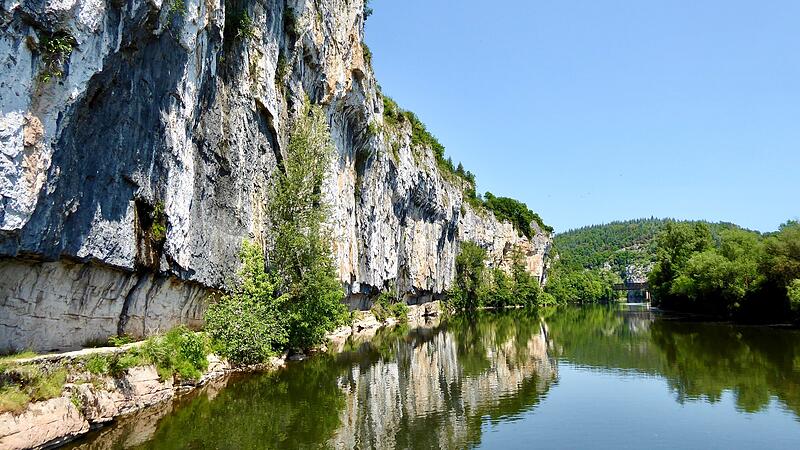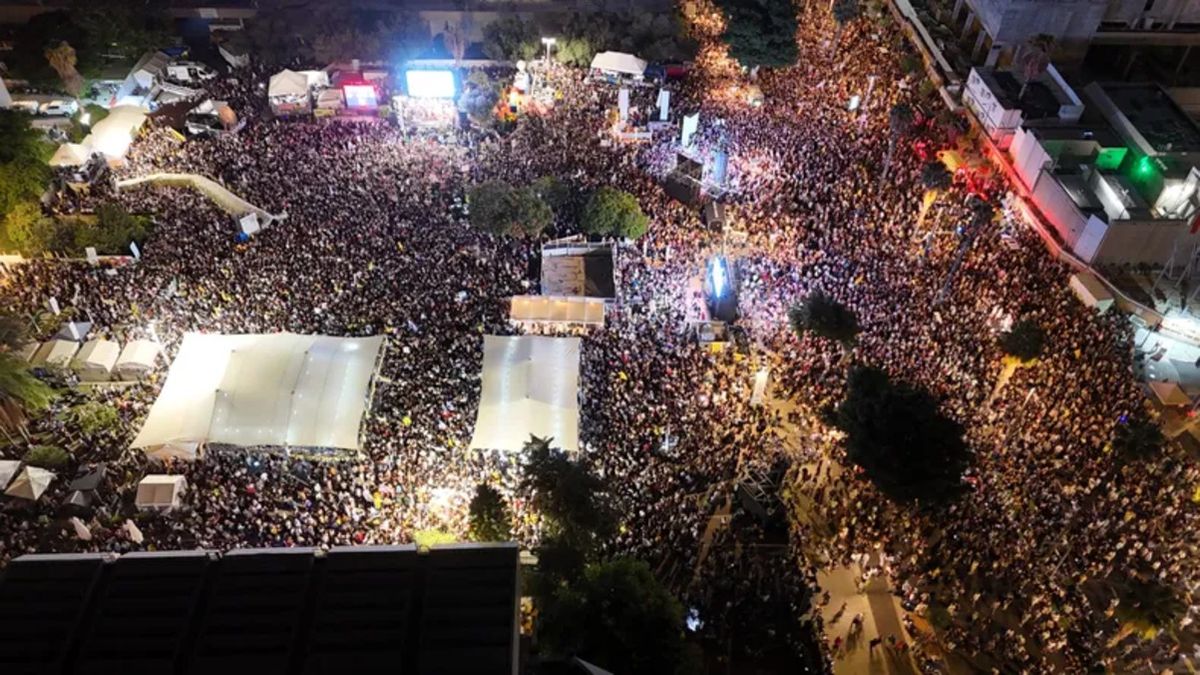He is a river and a monsieur at the same time. The Lot, which meanders 458 kilometers in France between the Massif Central and its mouth in the Garonne, is one of the few rivers that has a male connotation. His sisters, the Loire, the Saône and perhaps the Seine, are not jealous. In the southwest of France, it flows leisurely and largely unmolested by tourism, lonely between imposing limestone walls.
It flowed unmolested, one would have to say. Because after the canoe paddlers, it is now the mobile homes and recently the houseboat drivers who are discovering the Lot. A tourism consultant, who was probably looking at the overcrowded Canal du Midi, must have advised building the necessary infrastructure.
But it still applies: the Lot, both as a region and as a river, can boast the title of insider tip, especially since many tourists are French. The Lot, as infrastructural as dreamy and as unchic as it is, has unbeatable advantages. The plateaus are so barren that an oak steppe grows on them that need truffles to feel good. Lush pastures are rare. That’s why there are hardly any cattle, but plenty of ducks and geese – and foie gras, the dream of many gourmets and the gods of animal rights activists. Gan(z)s no matter which faction you belong to, goose stuffing is in the Lot a respected apprenticeship. To save our honor it should also be said that the whole animal is used.
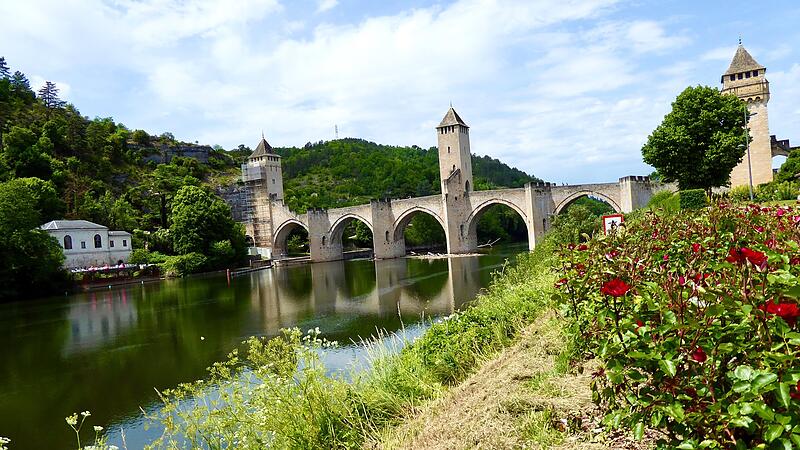

Because as confit in their own fat, not only the precious parts are marinated in the old tradition, but also necks and even stomachs, the “Gésiers de canard”, which are so delicious cut into small pieces on salad with balsamic vinegar and walnut oil from the area that you can’t help yourself can’t imagine that they might end up in dog food in this country. At that time, the goose and duck parts were stored in fat and brought over the winter without being cooled. Nowadays, confit de canard comes in a can. The Périgord and the Dordogne should be chosen as gateways from the north. The Lascaux Caves near Montignac reveal the primeval times of man. The show cave is actually made of plastic, as some people have remarked derogatory and not incorrectly, but it is so perfectly staged that even the 22-euro entrance fee including a guided tour is not perceived as outrageous. Between 20,000 and 40,000 years ago (I can’t be more precise), Mister Cro-Magnon painted more than 200 meters of the cave so perfectly that the wonder is real and awe-inspiring. Four Frenchmen accidentally discovered the cave in 1940. Until 1963 it was “really” accessible. Then it became obvious that the moisture from the breath of the visitors was affecting the limestone walls in such a way that mini stalactites sprout from the paintings. In 2016, the new replica cave was opened not far from the real one as the Lascaux IV Center National.
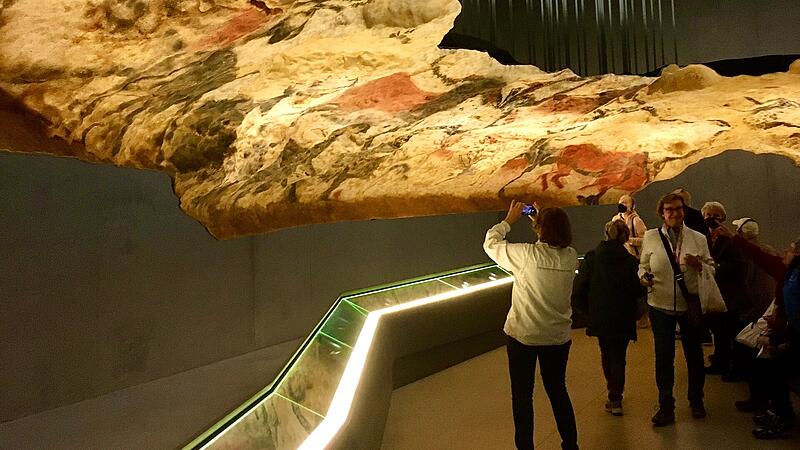

The surrounding building, designed by the Norwegian-American architects Snohetta, is no less impressive. Before the pandemic, there were 600,000 visitors a year. Since a visit is only possible with a guide, there were often disappointed faces when there was no space left. This year the rush was less. But if you want to be on the safe side, reserve.
Dining in Montignac on the banks of the Vézère is picturesque. Because of the proximity to Lascaux, however, you have to factor in a tourist surcharge of what feels like five euros per menu.
Next stop Rocamadour: Even if the air seems to be a little out of breath during the storm on the Way of St. James to Santiago de Compostela in Spain, in Rocamadour im Lot there are still many pilgrims with bulging backpacks, hiking sticks and sometimes with a shell as a sign of identification. The place of pilgrimage with its building complex glued to the rock with the Black Madonna as a fixed point is a popular stopover in the Lot department.
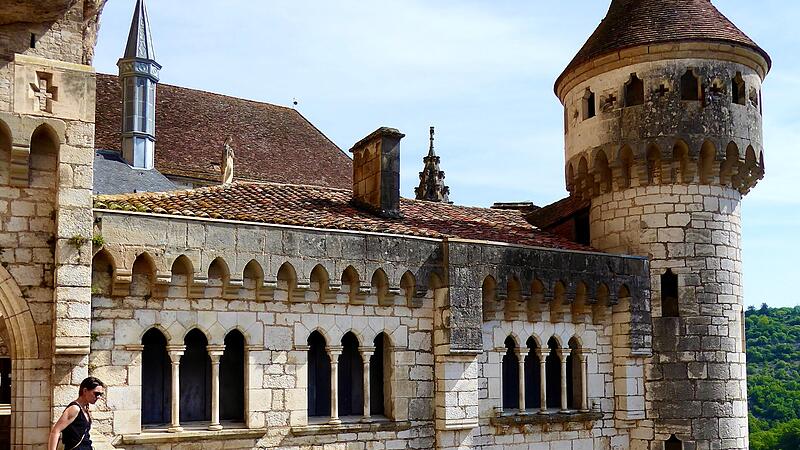

As a “normal” holidaymaker, the best way to discover Rocamadour is from the bottom up and not on a weekend. Because then the onslaught is excessive. Simply park your car in the parking lot below, say goodbye to the six euro parking fee, then it’s a steep climb.
216 steps on knees
Only wimps and ailing feet take the slow train. Finally, the pilgrims are thought of, who in the past not infrequently slid up the 216 steps of the last piece on their knees to get rid of their sins. How did Rocamadour – also the name of a sinfully delicious, internationally available soft goat cheese – get its name? A hermit named Amadour was found uncorrupted in his cave in 1166; with him the carved black Madonna that made him holy.
What the “Big Five” are to South Africa’s photo safaris (rhino, lion, leopard, elephant and water buffalo) are the “Big Four” to landscape and history in the Dordogne and Lot departments. Lascaux and Rocamadour are two of them.
Number three is the village of Saint-Cirq-Lapopie, said to be the “most beautiful village” in France, with only 13 inhabitants. Saint-Cirq is not badly enthroned above the leisurely Lot river. But the historic town of Puy-l’Éveque at the western end of the department can easily keep up. This both in terms of the steepness factor and the history. But the marketing story of Saint-Cirq-Lapopie (named after the saint to whom the church is dedicated) arguably has a better way of telling it.


“Grain Alley” of France
The houses of the “most beautiful village in France” are spruced up and the “main street” at the bus parking lot, which tilts the tourist loads from above and thus without inclines into the village, is a shopping avenue. Did someone here say something about the “grain alley of France”? No, Saint-Cirq-Lapopie is not exclusive enough for that. At the very least, like Rocamadour, Saint-Cirq should be explored from below.
A free car park in front of the “Halte nautique” (boat stop) at the foot of the rock on which Saint-Cirq-Lapopie is enthroned easily accommodates the car. Put on sturdy shoes and in a quarter of an hour you’ll be past the village gate. The path is lined with galleries up to the “grain alley” of France, which also earned Saint-Cirq the name artists’ village. They’re there whenever money gets there, and they’ll be moving into their picturesque studio cottages from May.
The real big number four, which really shouldn’t be missed, is the stairway carved into the limestone cliffs on the banks of the Lot, not far from Sain-Cirq at Bouziés. Called “Chemin de Halage” (drag or towpath), it stretches spectacularly along a few hundred meters. Photographers are recommended to go in the morning with the best incidence of light, when the limestone seems to glow from within. In the afternoon the “Halage” is in the shade. The best way to get started is from the “Halte nautique” car park. Keep going straight along the rock on which the village of Saint-Cirq-Lapopie stands, and don’t give in to the temptation to go up. After a mill (16th century!) and a Lot sluice it goes straight ahead. Voilà, here is the “chemin de halage”. If you continue past the rock overhangs, you will reach the little village of Bouziès with the Hotel/Restaurant Les Falaises, where you can enjoy excellent, traditional French food.
Next stop Figeac: Pure Middle Ages welcome the guest an hour’s drive from the Lot Valley. The touristically unexcited Figeac seems to be dressing up to be included in the ranks of travel destinations worth seeing. Because it does not seem to have been enough to rely on Monsieur Jean-Francois Champollion, who was born in Figeac, and set up a museum of the history of the writings of the peoples.
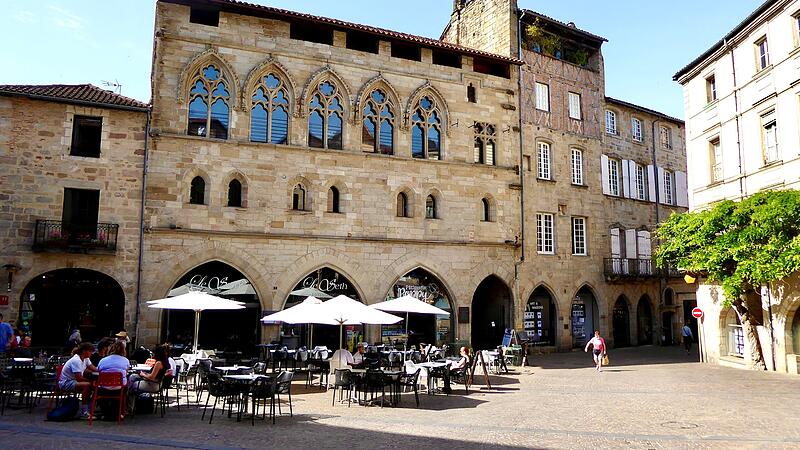

Although many came and continue to come to study the decipherer of the Rosetta Stone, who thus took the riddle out of the Egyptian hieroglyphs, the old town of Figeac is the real diamond in the rough that still needs to be polished. Yes, the Benedictines were here as early as the eighth century.
Wonderful walnut oil
A culinary shopping tip: One should not leave the Lot without having bought walnut oil. The huge walnut groves spread out next to the river like those of the apricots in the Wachau.
“Lot, goodbye,” they say at some point. One wishes that not too many tourists come, so that the dreamy nonchalance remains. One hopes that nobody will write a Lot crime novel (like in the Périgord with the policeman Bruno), because one does not want to see this picturesque, sleepy area overrun and spoiled by consumption. But a few more vacationers should come, so that this not exactly prosperous area can remain as it is and so that the rural exodus does not increase. When the last boulangerie (bakery), the last charcuterie (butcher’s shop), the last l’Epicerie (grocery store) and the last restaurant in a town are closed, you don’t have so much scenic beauty.
Go there, eat well, live well – and Lot is alive.
tips
- Reside: It’s a little out of the way but an ideal place to stop off between Saint-Cirq-Lapopie and Figeac: the Hotel La Bastie d’Urfe in Naussac. The former mansion from the 18th century not only has a pool, but also a restaurant. Nine rooms, three stars (from 75 euros for a double room, breakfast extra).
labastiedurfe.com - Meal: Souillac is on the way from Lascaux to Rocamadour. There you can eat down-to-earth, inexpensive and good in the Le Beffroi restaurant (6, Place Saint-Martin, 46200 Souillac)
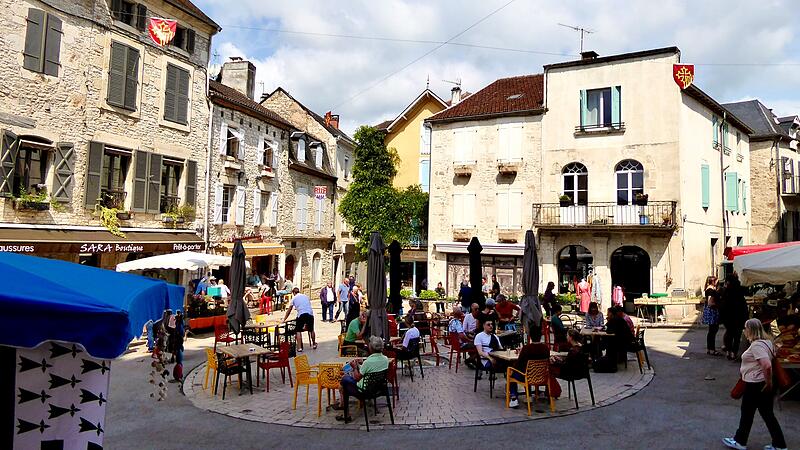

- Drink: In the Lot, half an hour’s drive west of Cahors, is the cooperative wine shop Vinovalie with (almost) all wines from the Lot region (Malbec grape variety); Cave de Cotes d’Olt Caunezil, 46140 Parnac; vinovalie.com
Source: Nachrichten

